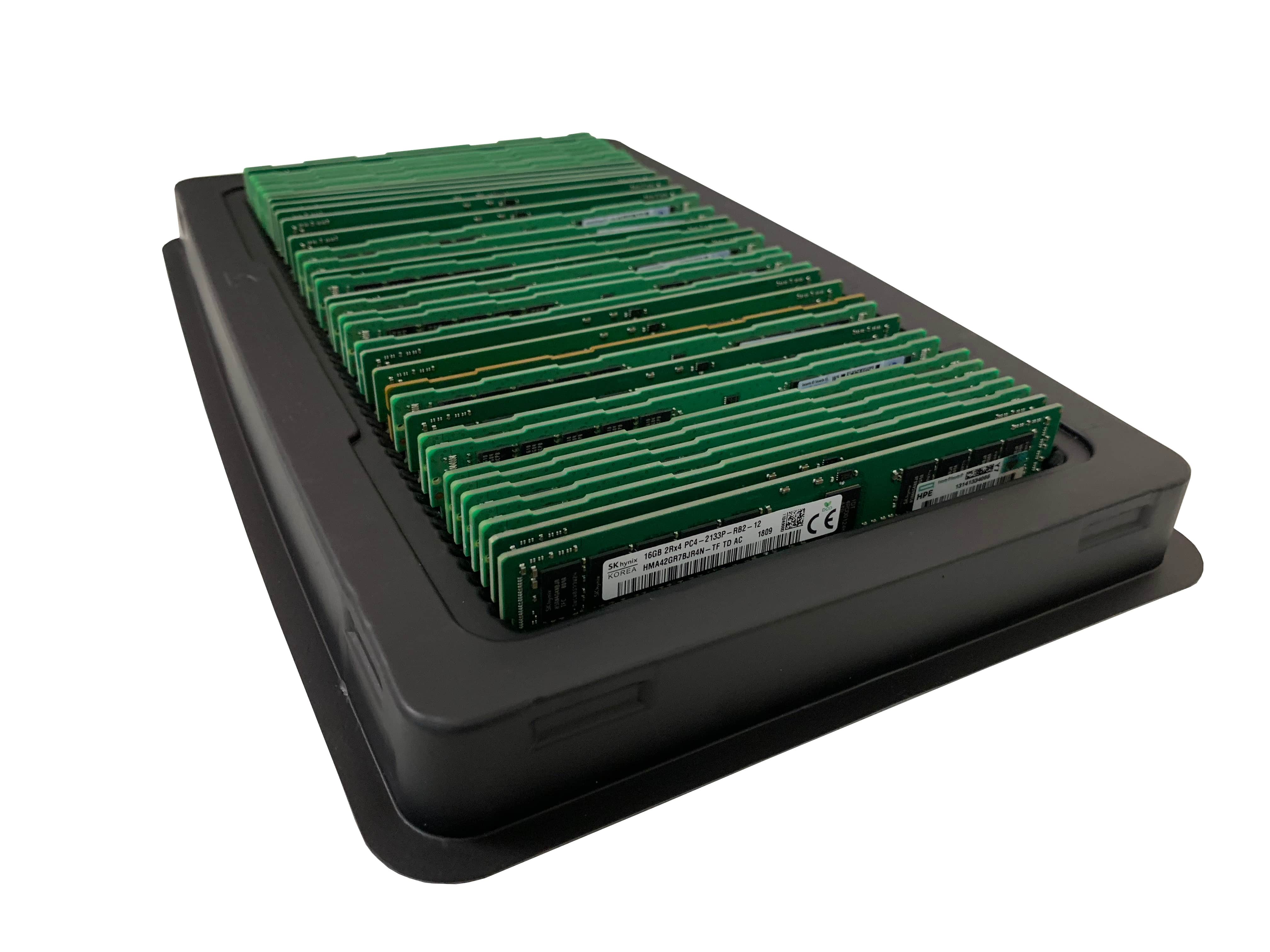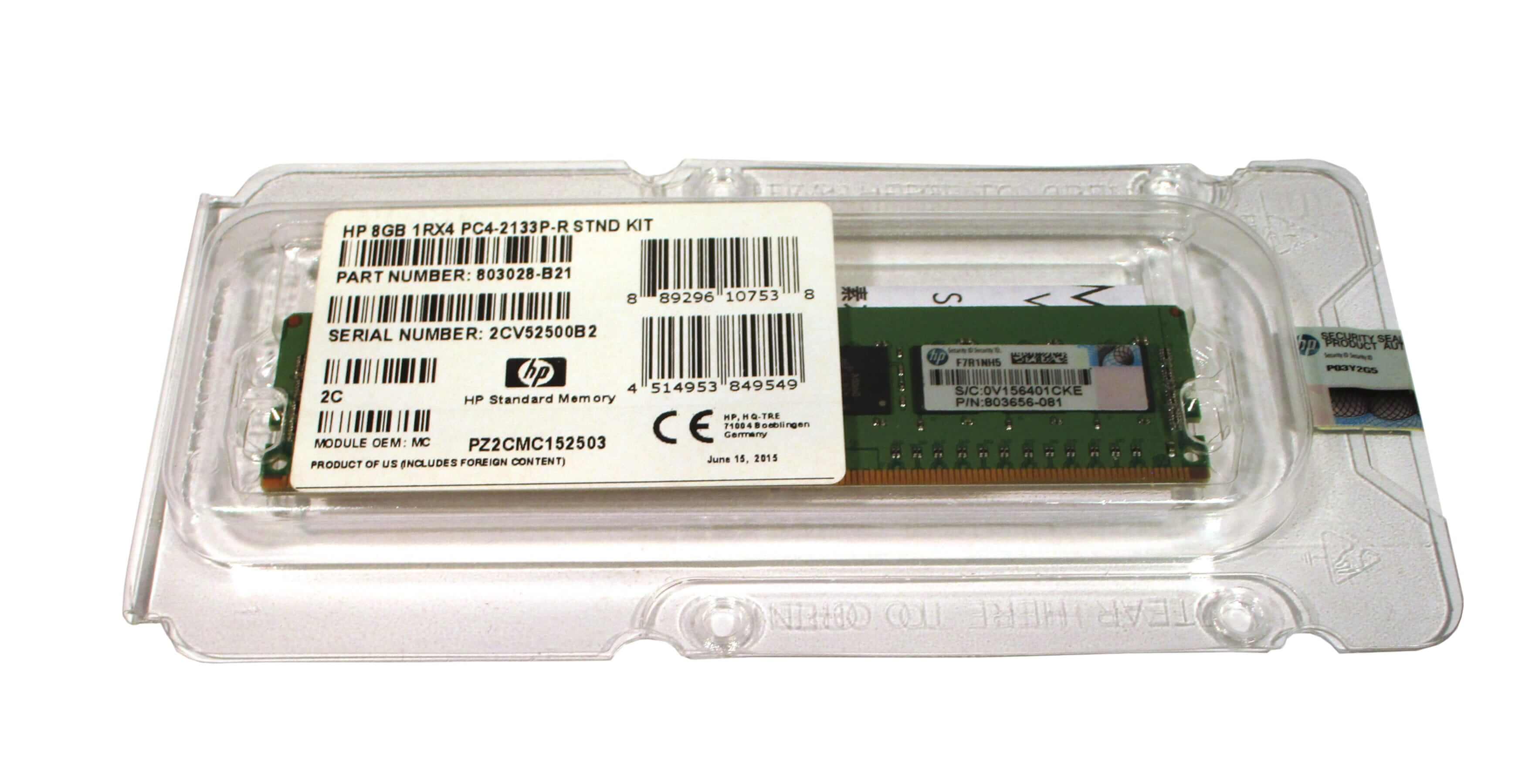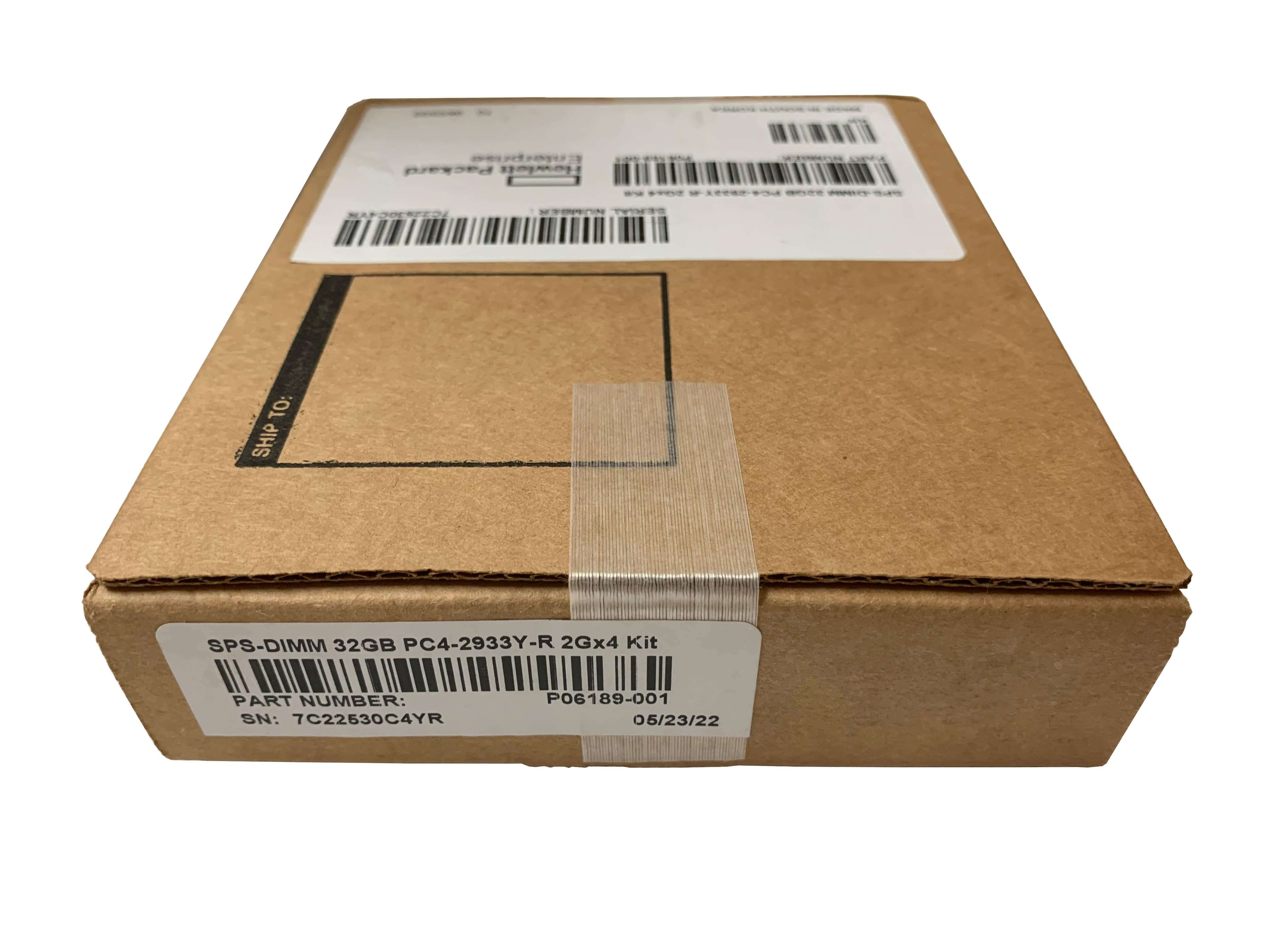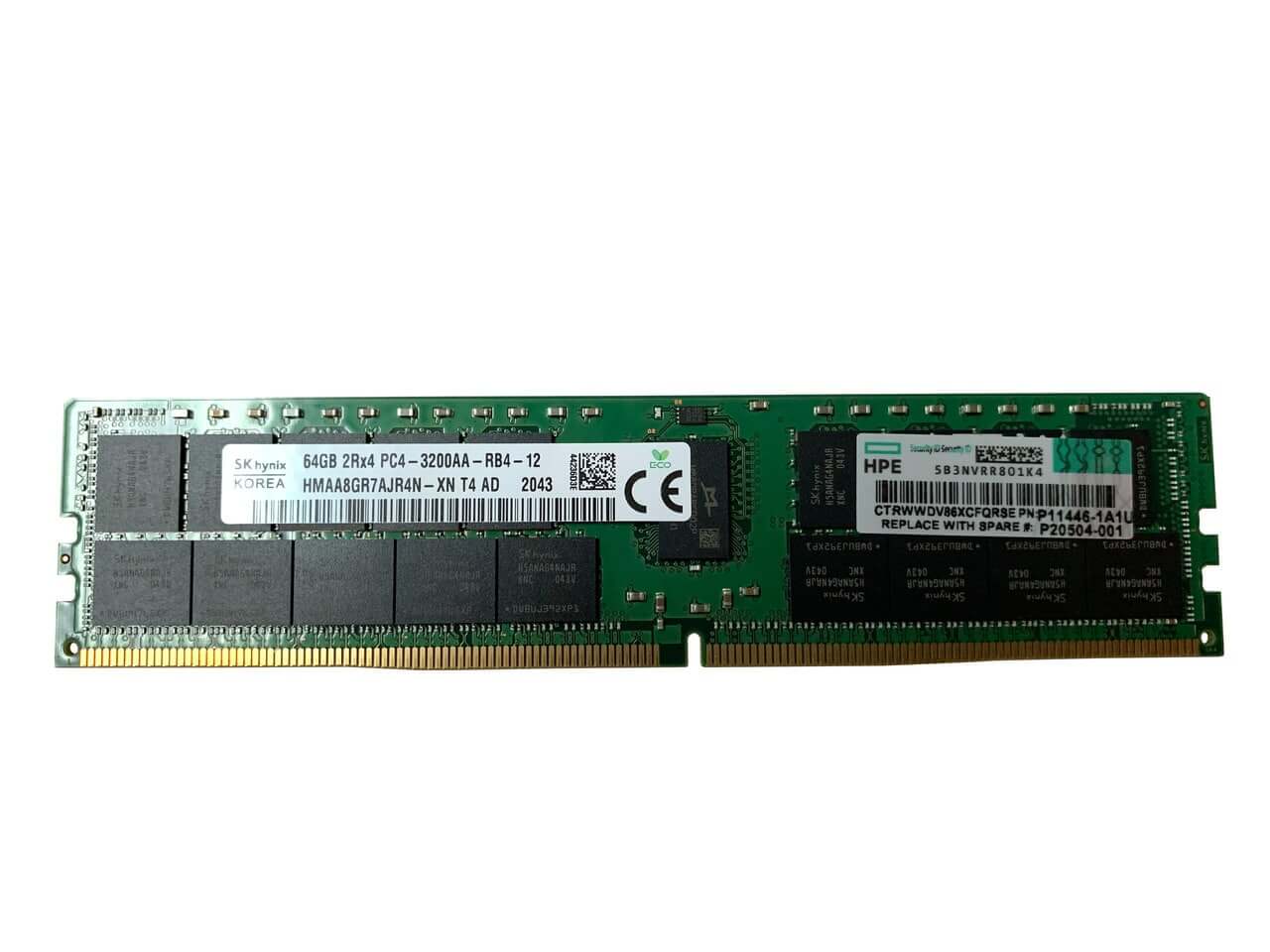A Brief Overview of HPE Server Memory Types
Posted by Michael Ramirez on 6th Jul 2022

When it comes to HPE server memory, there are multiple types of memory modules that are best suited for different types of server applications. Often, we think that the only difference in memory is the difference in DDR SDRAM specification, whether it is DDR2, DDR3, DDR4 and the yet to be released DDR5 specification. Yet, there are different types of HPE Enterprise memory modules which include Load-Reduced (LRDIMM), Registered (RDIMM), and Unbuffered dual in-line memory modules (UDIMMs) that each has their advantages for HPE ProLiant server applications. For enterprise server applications, which includes mainstream large scale server architecture, there is HPE SmartMemory which can be either load reduced or registered. I will briefly go over the different memory types to give you a brief overview on what you can expect performance-wise from these memory modules for your server configurations.
HPE RDIMM Memory
Registered memory modules (RDIMM) provide increased stability by putting less electrical load on a motherboards memory controller. Registered memory modules are more often than not, required for enterprise server applications that need to stay up and running constantly with little or no interruption to their service. Most server motherboards can support up to 64GB of registered memory modules per DIMM slot and 64GB is the maximum memory capacity you can purchase for registered memory modules. RDIMMS are available in both single rank and dual rank per RDIMM. RDIMM memory modules are available in 4GB, 8GB, 16GB, 32GB, and max out at 64GB of memory capacity.
HPE LRDIMM Memory
Load-Reduced memory (LRDIMM) allows you to install far more SDRAM memory capacity into your HPE ProLiant server DIMM slots. By using LRDIMM memory, you will easily achieve the best possible memory footprint available for your server configuration. Most HPE ProLiant servers can have up to 24 DIMM slots and usually have a maximum memory capacity specified. The maximum memory capacity you can install will depend on whether you are using Registered (RDIMMs) or Load-Reduced (LRDIMMS) memory.
For example, if you wanted to use RDIMM memory for your server configuration, the absolute maximum memory capacity you would be able to install is 768GB of memory (24 x 32GB). LRDIMM memory modules however, provide up to 24 x 64GB memory capacity, which is 1536GB of memory. That is double the memory footprint from 768 Gigabytes of memory capacity to a whopping 1536 Gigabytes of memory capacity! Ideally, LRDIMM memory modules are best suited for server applications that run online transaction processing, cloud computing, and high-performance computing environments since they store large amounts of data due to their huge memory footprint.
HPE UDIMM Memory
UDIMM are memory modules that are unbuffered or unregistered. This means there is no buffer between UDIMM memory and the memory bus controller, whereas DIMM memory does have a buffer between them and the memory bus controller. Because of this, UDIMM are lower in memory capacity and have a lower latency overall. That being said, Unbuffered memory is the most affordable memory available and is best suited for small businesses that have a tight budget and aren’t looking for the most optimal memory speeds. Unbuffered memory modules also possess the least amount of memory capacity compared to RDIMM and LRDIMM memory modules. Per DIMM slot, the maximum memory capacity for UDIMMs will be 16GB.
HPE SmartMemory
HPE SmartMemory is required for enterprise server applications that need maximum performance. HPE SmartMemory operates at higher speeds, offers advanced error detection technology, provides far greater power efficiency, and integrates with HPE Active Health System. HPE Active Health System logs critical memory errors, giving you the ability to easily diagnose any issue that should arise with memory. Finally, SmartMemory are the most power efficient memory available on the market, which means a significant reduction in power consumption and a lower overhead cost.
Many business enterprises have critical server infrastructure that needs to be running at all times with little to no interruption, so SmartMemory is a must-have for these server applications. These types of enterprise applications would include E-commerce, artificial intelligence, and big data applications. HPE SmartMemory kits like the HPE P00924-B21 HPE 32GB SmartMemory are ideal for enterprise server applications.
HPE Standard Memory
HPE standard memory has data integrity features such as error correcting code (ECC), is available in registered (RDIMM), load-reduced (LRDIMM), unbuffered (UDIMM) and has memory capacities up to 128GB. Standard memory differs from SmartMemory as standard memory modules aren’t as efficient as SmartMemory when it comes to power efficiency. Standard memory uses more power, which can increase overhead costs for running servers. For this reason, standard memory modules are best suited for non-enterprise server configurations. For standard memory modules, the highest capacity for RDIMM is up to 64GB; 128GB for LRDIMM, and 16GB for UDIMM.
Procuring Memory
When you purchase HPE server memory, whether it be new retail or factory sealed condition, you can expect different packaging options. For new retail memory, the memory mainly comes in memory clam shells that are sealed with an official HPE warranty sticker. As you can see on the memory label below, you can see the specs of the memory module. You can even see the HPE warranty sticker on the memory module itself to the right of the package which seals the memory clamshell.

For factory sealed memory modules, you can find the specs of the memory on the front label. The factory sealed packaging also displays the memory sticker on the side of the package. As you can see from below, any genuine HPE memory will have the specs of the memory as well as the official Hewlett Packard Enterprise

So, how can you tell if your memory is genuine HPE and not third party? Every memory module will have a part sticker that shows the security id. The Securely ID is a barcode that you can scan to check the current warranty status of the memory. As in the example below, you can easily see the memory part sticker to the right of the memory module.

It is essential that you not mix 3 rd part memory with HPE ProLiant servers since these servers often perform authentication checks to ensure you are in fact using a genuine HPE memory module. Using 3 rd party memory modules instead of genuine HPE hardware could result in some issues such as data corruption.
Mixing and Matching Memory
When it comes to optimizing your servers, you have to pick the best option and stick to it. Mixing and matching different memory modules will not work because if you have two different memory modules, your server will not boot up. Thus, you cannot mix and match RDIMMs and LRDIMMS at all, nor can you mix DDR2, DDR3 and DDR4 memory. You can totally mix and match different memory sizes such as filling DIMM slots with 4GB and 8GB memory sizes, but you will not have the same ability when it comes to choosing the type of memory.
To summarize, UDIMMS are ideal for HPE ProLiant ML Series tower servers or for small to medium sized businesses that need memory in general with no need for speed. For LRDIMMS, these types of memory modules are ideal for servers that run online transaction processing or for applications that store large amounts of data. And for RDIMMs, these types of memory modules are ideal in all HPE ProLiant and HPE Synergy servers, making their applications versatile.

